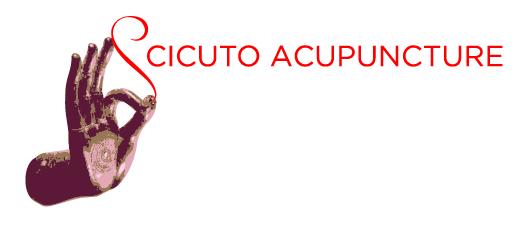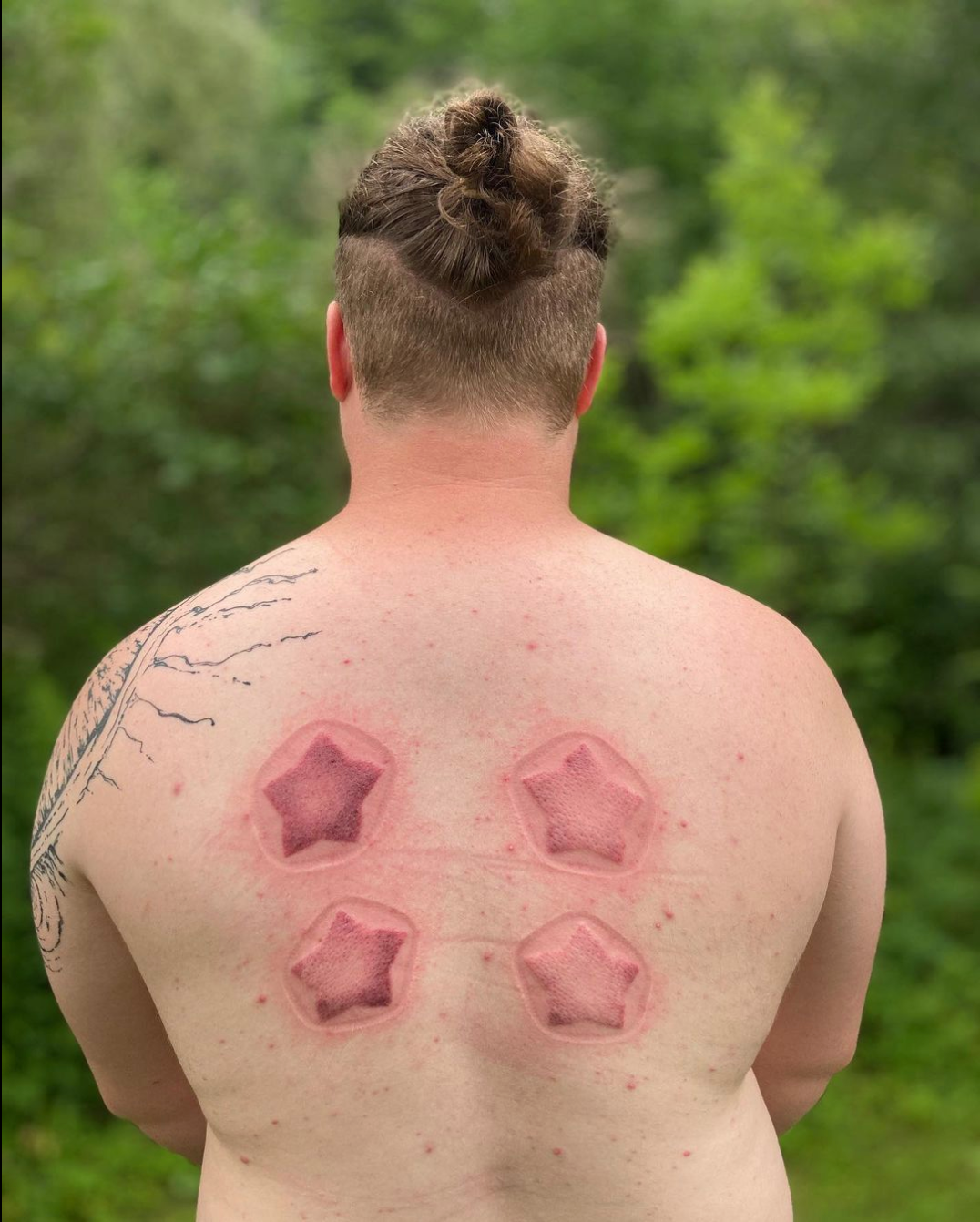The benefits of Cupping therapy
[Image ID: A photo of a fair-skinned woman holding a black and white striped glass cup in one hand and a flaming cupping tool in the other hand in front of her. The focus is on the cup, cupping tool, and hands. The woman has long white and red hair and wears glasses. One eye is obstructed by the flame in front of her. There is a dark wood cabinet in the background. End description.]
It’s no secret that I love cupping therapy. I also love beautiful cups made by Flaming Cups and Love Cupping. There are also really fun cups made by Rock Star Cupping.
What is cupping therapy used for?
Cups are therapeutic tools that are good for:
relieving muscular pain
supporting your immune system
healing skin problems
relieving joint pain
benefitting digestive health
helping your lungs so you can breathe better
encouraging lymphatic drainage
How do the cups stick?
In Fire cupping, the flame is only used to create a vacuum. We put it inside the glass or ceramic cup for a second and then remove the flame and stick the cup on your skin. You should not feel heat at all. Your acupuncturist can adjust the pressure by pressing between the cup and your skin. Other kinds of cups use a suction pump and have release valves on them to adjust the pressure. There are also silicone cups that have no valve and work by squeezing to adjust the pressure. The cups create suction and signal to your body that this is a place that needs healing.
Denise is doing fire cupping on a patient who is face down on a massage table. There is a flaming cupping tool in Denise’s left hand. She is pressing a green glass cup onto the patient’s low back The patient also has white heart-shaped cups on her low back and clear star-shaped cups on her upper back. Photo by Chloe Jackman Studios.
[Image ID: photo of a fair-skinned woman wearing a black halter top. Her back is to the camera. On her back are four purple star-shaped marks from cupping therapy. In the background are white tents and green trees. End description.]
What do the colors of the cupping marks mean?
Cupping marks vary from pale to dark and will tell your acupuncturist useful diagnostic information. The marks will last from about 3-7 days.
Cupping marks can range from very light pink to red to purple. Sometimes you’ll just see red or purple dots and sometimes the whole area will have color in them. In general, this is what the colors tell your acupuncturist:
Pink means that there isn’t a lot of stuck energy in the area. It may also indicate a weak constitution.
Red indicates heat in the area.
Purple cupping marks can indicate stuck Qi & Blood in the area (pain and tightness).
The photos here were taken of friends on vacation and shared with their permission - I bring cups wherever I go! My brother always asks “Are you bringing your cups?”
My friend with the star cupping marks had spent the weekend building a camp kitchen then making us yummy food while bent over camp stoves. It’s no wonder to me that these cupping marks turned out dark.
[Image ID: photo of a fair-skinned woman wearing a burgundy halter top. Her back is to the camera. On her back are three heart-shaped cupping marks - one on her left scapula and two overlapping on her right scapula. There is a lake in the background. End description.]
The heart-shaped cup marks on another friend aren’t as dark. This indicates that while her shoulders were tight, they didn’t have as much stuck qi and blood (pain) in the area.
[Image ID: A white man has his back to the camera. On his back are four red star-shaped marks from cupping therapy. On his left shoulder is a black ink tattoo. The background is out of focus and green.]
My third friend’s cupping marks are darker on the left side, indicating he has more tightness on that side of his body.
What is a cupping session like?
Your acupuncturist may or may not apply a balm to your skin first. Then they will apply the cup to the area. Generally, the cups stay on for about 10 minutes. Sometimes the acupuncturist will keep the cups in one place (stationary cupping) or move them around (moving cupping).
When it comes time to remove the cups, you make hear a popping sound when they come off (which may make you giggle). Your acupuncturist will wipe off the balm if they applied one. And then the session is over.
Cupping may be before or after an acupuncture treatment, or done on its own.
Is cupping only done on the back?
No! Cupping can be done on any fleshy part of the body. Cups come in many sizes for different parts of the body. There are tiny silicone cups that are often used for facial cupping. I use them on smaller areas that my larger cups won’t stick to.
Does cupping hurt? (the Burning question. Pun intended)
Cupping shouldn’t hurt. If you’re already in pain, the suction may be tight at first. Please let your practitioner know right away so they can adjust the pressure.
Cupping should be an enjoyable treatment. It should feel like a strong massage but not a painful one. And it may leave you with a fun souvenir you can show off after!
Pro-tip:body Butter!
I always use a balm on the skin when I do cupping, even if I leave the cups in one place for the whole time. Using a balm makes it easier to slide the cups to just the right position without causing pain.
My favorite balms are body butters from Soap Cauldron. They are a local company in California. Lemongrass, Gravenstein Apple Clove, and French Lavender are my patients’ favorites. I always get their seasonal blends too!





